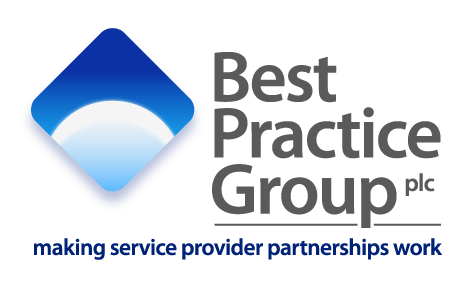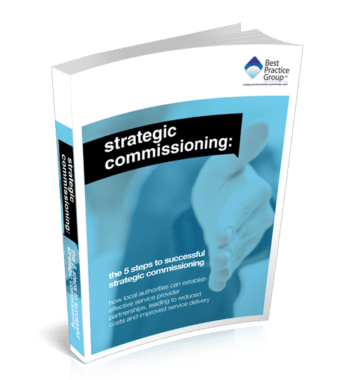 In the public sector, procurement should have, at its foundation, strictly process-orientated procedures, with clear supplemental processes to make sure that solutions and services purchased are fit for purpose, not just that they follow legal procurement compliance.
In the public sector, procurement should have, at its foundation, strictly process-orientated procedures, with clear supplemental processes to make sure that solutions and services purchased are fit for purpose, not just that they follow legal procurement compliance.
However, if those public procurement compliance processes are not followed to the letter and one of the bidding suppliers thinks the process has not been competent, fair and equitable, then the ramifications can be very costly, as Oxford County Council (OCC) has recently discovered.
After OCC’s legal team estimated that it had less than a 25% chance of winning its case, the council was reportedly required to settle out of court with Marston Holdings for £1.6m – including an undisclosed sum to cover all legal costs – for what has been described as ‘significant failings’ in their procurement process.
It is, though, important to remember that the financial cost of this unfortunate incident is only the tip of the iceberg. The allegations by Marston Holdings that the local authority had conducted its procurement in a way contrary to the Public Contracts Regulations 2015 and the subsequent proceedings also prevented OCC from appointing a new supplier, leaving them with a less than satisfactory outcome.
The question is, where did this procurement project go wrong and how can you mitigate the risk of something similar happening to your organisation?
Oxford County Council vs Marston Holdings Ltd
Marston Holdings offers transportation and enforcement services to hundreds of central and local government clients. In fact, they hold themselves up to be the UK’s largest company in the sector, with over 500 public and private sector clients, responsible for over 200 sites and processing around 1.5 million parking enforcement cases a year.
Marston was already the parking enforcement supplier for OCC. When its contract came up for renewal and a competitive procurement process was undertaken, it claimed systemic failures from the council and less than 2 years ago, the company made its complaint and legal proceedings ensued.
As a result, OCC’s Chief Executive, Yvonne Rees, commissioned an investigation. The specifics of what caused Marston Holdings to believe that the procurement process had not been undertaken correctly have not been included in much detail, but we do know the following from the 10-page report that resulted from the investigation:
-
- Poor quality process. The quality of the initial preparations for the tender process and the resulting documents was weak.
- Poor record keeping. A series of issues were identified, some minor and some more significant, around record keeping, procurement guidance, the experience of some personnel involved and the clarification sessions undertaken as part of the process.
- Constant team changes. Inconsistent management and the use of agency and temporary workers within both the service and procurement teams prevented full oversight and the appropriate escalation of risks and issues.
- Poor guidance. There were issues with regard to the procurement guidance in use by the council, this resulted in poor process, particularly with regards to record keeping.
- A lack of clear briefings. There were a series of assumptions and miscommunications by officers that led to both portfolio holders not being properly briefed with regards to the settlement of the case.
Marston Holdings’ challenge against the council was successful and it decided to settle the case. In response, Yvette Rees is reported to have stated: “The council has accepted in full the recommendations that have been made. Building on this, there is a resolute determination throughout the organisation to minimise the chances of such circumstances ever re-occurring.” Apparently, there have been “significant personnel changes at the council” and their procurement process has been fully redesigned.
Four ways to mitigate risk in your procurement process
Successful strategic supplier relationships are built on a foundation of competence and trust. Your first opportunity to evidence trustworthiness comes in the way your organisation handles its procurement process and constructs its contractual agreements.
Evidence dictates that the most effective organisations that procure fit for purpose solutions and services in a legally compliant way, follow four steps:
-
- Create a carefully constructed requirements document
Step one is to fully appreciate the outcomes you are looking to achieve, then reverse engineer, with the help of all relevant stakeholders, to determine a full set of requirements that will propel you along the road to your desired outcomes. Tempting though it may be, do not include anything which would steer or restrict your supplier in their decision as to ‘how’ to achieve your outcomes. Your role here is to provide your suppliers with the detailed visibility of your organisation they will need to best determine how they would approach delivering your solution.
-
- Create a tender template for verifiable like-for-like comparisons
One of the biggest causes of disputes in the procurement process is that unfair advantage or bias has been shown to one party over another. Creating an agile tender template alongside a transparent procurement process announced at the outset and agreed by all tendering suppliers, offers a good way of fairly and equitably comparing proposed solutions against the business outcomes you wish to achieve. In turn, this provides a good degree of protection against legitimate supplier challenge. Then all you need to do is to follow your own guidelines and document every step to underline that protection.
-
- Create an evaluation framework to ensure a fair scoring system
How you assess each supplier’s tender needs to be standardised to ensure a fair scoring system, which can be evidenced as such, should one or more party dispute your procurement process. Essentially, your framework must be objective and auditable, focusing on ‘what’ you will be evaluating and ‘how’ it should be scored. The framework can be as detailed as you feel necessary, usually the more granular the better, and should be made available to all suppliers at the outset of the procurement process (this is a must on all public sector tenders).
-
- Create a more optimised relationship through pre-contractual supplier due diligence
To assure you achieve fitness for purpose of the solutions and service procured and develop a deeper understanding of your supplier and they you, include a contract for their advice, separately, to the solutions and services procured within your agreement with them. It’s important to engage your prospective partner as an ‘expert supplier’ to ask them for their professional guidance. This will help to achieve clarity in your outcome aspirations or their ability to achieve them. It also offers excellent research material for the task ahead and may raise important issues that will require a shift in direction. Importantly, it can provide additional means by which you can evaluate their suitability for the task ahead.
Conclusion
The high-level nature of this report outlines that Oxford County Council did not follow a strong enough strategy to mitigate its procurement risk and it cost them dearly. Kudos to them for evaluating what went wrong and for implementing new processes and procedures to ensure that it does not happen to them again, though, of course, no risk management strategy is one hundred per cent effective.
When it comes to optimising your procurement risk strategy, it comes down to process, process, process. Be clear, gain buy-in, and document everything material to ensure that your fair system can be evaluated in case of dispute.
Do you want to get to a good place fast? For further information on how to successfully engage new strategic partners, click here.

